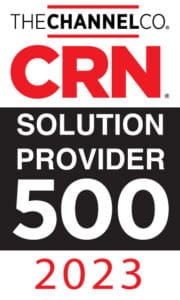Empowering You to Scale Your Digital Initiatives With Trust and Confidence
A Catalyst for Cloud, Digital, & Workplace Transformation
In today’s rapidly evolving threat landscape, securing your critical digital assets isn’t just something we can do—it’s intrinsic in everything we do. At Ascend Technologies, we understand that cybersecurity is no longer confined to a siloed internal department; it’s a responsibility shared by everyone in your organization. Every action you take must consider security as an integral part.
While it’s important for each department to be security-conscious, taking matters into their own hands can lead to redundancy or ineffective solutions. Investing in numerous point security solutions often creates a cyber paradox, hindering digital transformation projects. Instead of viewing security as a blocker, it should be the catalyst for your cloud, digital, and workplace transformation initiatives.
Bringing Clarity and Trust to Digital Interactions
Ascend builds trust in digital interactions across your entire IT stack, empowering you to think bigger and act faster. We don’t just offer peace of mind; we provide the confidence to focus your efforts on driving innovation. Our cybersecurity approach involves enabling more employees, partners, and suppliers to work productively and securely, ensuring you can thrive at scale.
-
Security Awareness Program (SAP)
Empower employees with the knowledge and skills to identify and mitigate security risks through customized training programs and simulations.
Learn More about Security Awareness Program (SAP) -
vCISO (Virtual Chief Information Security Officer)
Gain access to expert cybersecurity leadership and strategic guidance without needing a full-time CISO.
Learn More about vCISO (Virtual Chief Information Security Officer) -
Risk Compliance Management
Ensure regulatory compliance and manage cybersecurity risks effectively through comprehensive risk assessments, controls implementation, and ongoing monitoring.
-
Cybersecurity Engineering
Leverage our expertise in designing and implementing secure IT infrastructures, networks, and systems to protect your digital assets.
-
Vulnerability Management
Identify, prioritize, and remediate vulnerabilities in your systems through proactive scanning, testing, and patch management.
Learn More about Vulnerability Management -
Managed Detection & Response (MDR)
Detect and respond to threats in real time with advanced security monitoring, threat intelligence, and incident response capabilities.
Learn More about Managed Detection & Response (MDR) -
CMMC Assessment
Our Cybersecurity Maturity Model Certification (CMMC) Assessments are designed to empower organizations with the necessary tools and expertise to achieve and maintain compliance with the CMMC requirements.
Learn More about CMMC Assessment -
Security Risk Assessment
Conduct thorough assessments of your organization’s security posture to identify gaps, vulnerabilities, and areas for improvement.
Learn More about Security Risk Assessment

Your Trusted Guide for Cybersecurity.
Navigating the uphill battle and slippery slope of cybersecurity can be challenging. Many cybersecurity providers lack expertise in the full IT stack, system integrators may lack true cybersecurity knowledge, and born-in-the-cloud providers may lack abilities in both.
Modern transformation efforts require a trusted guide. Ascend is the only partner that covers it all, guiding you from the base to the summit.
Frequently Asked Questions
What kind of industries does Ascend serve?
At Ascend, we provide comprehensive cybersecurity solutions for businesses of all industries. Our team of experts is on hand to provide the best protection for your critical infrastructure, utilizing the latest security technology and staying ahead in the fight against cyber threats. We can provide tailored solutions to protect your network, data, and mobile devices from sophisticated cyber threats and malicious software.
How often is the security system updated?
We provide regular updates and maintenance of the security system to ensure that your network remains secure and up to date. Our experienced team of experts is on hand to provide prompt assistance and maintenance to keep the system running smoothly.
What type of cyber threats does Ascend protect against?
Ascend provides protection from sophisticated cyber threats, malicious software, insider threats, data breaches, and advanced persistent threats. Our experienced team of experts is dedicated to staying ahead in the fight against ever-evolving cyber threats and providing the best protection for your critical infrastructure.
Partner with ascend for Unmatched Cybersecurity Solutions
Ascend’s holistic approach to cybersecurity ensures that your organization is equipped to tackle evolving threats and drive digital transformation securely. Contact us today to learn how our comprehensive cybersecurity solutions can help you scale your digital trust and confidence.





